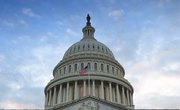The United States holds two very different kinds of elections: primary and general. Both are important in determining the will of the people. This process finds out who the people want to run for each party, and then which party's candidate they choose over the other party's candidate. The primary election is the party nomination part of the election and the general election is the vote for the office-holder.
Primary Election
A primary election is the process used by political parties to nominate their candidates to run in the general election. Each party has its own primary election to decide which of its candidates has the best chance of winning the general election over competing parties. Primary elections force party members to run against each other to gain nominations. In the United States, this means that Republicans run against other Republicans and Democrats run against other Democrats in primary elections.
In a primary election, you are only allowed to vote for one party's candidate. When you register to vote, you must choose a political party or identify as an independent voter. If you register as an independent voter with no party affiliation, you may not be able to vote during primary elections in some states. Certain states, like Florida, have closed primary races that only allow votes from voters who are registered with one of the parties in the running and even then they can only vote for the party with which they are registered. If you registered as a Democrat, for example, but your favorite candidate happens to be a Republican in a primary race, you may only be able to vote for one of the Democratic candidates in the primary.
General Election
The general election is the main election where the voters make their final decision on the winner. This vote is mostly between those individuals nominated by their party in the primary elections, but it also includes any independent candidates.
Nonpartisan Primaries
Primary elections are also used in nonpartisan races in an effort to narrow the number of candidates in the general election. This means that the same voters must vote for their candidate twice, first in the primary election and then in the general election. Just like in partisan races, if the candidate you voted for in the primary election does not succeed, you can vote for somebody else in the general election.
Presidential Election Dates
The general election for the U.S. presidential race is held every four years on Election Day, which is always the first Tuesday in November. The next general election year is in 2020. Primary elections have many different dates before the general election. The Democrats and Republicans have different schedules for their party's primaries. The Democrats run primary elections from January to June and the Republicans from January to July. Primary results are determined well before the general election in November.
Related Articles
References
Writer Bio
Brian Gabriel has been a writer and blogger since 2009, contributing to various online publications. He earned his Bachelor of Arts in history from Whitworth University.











